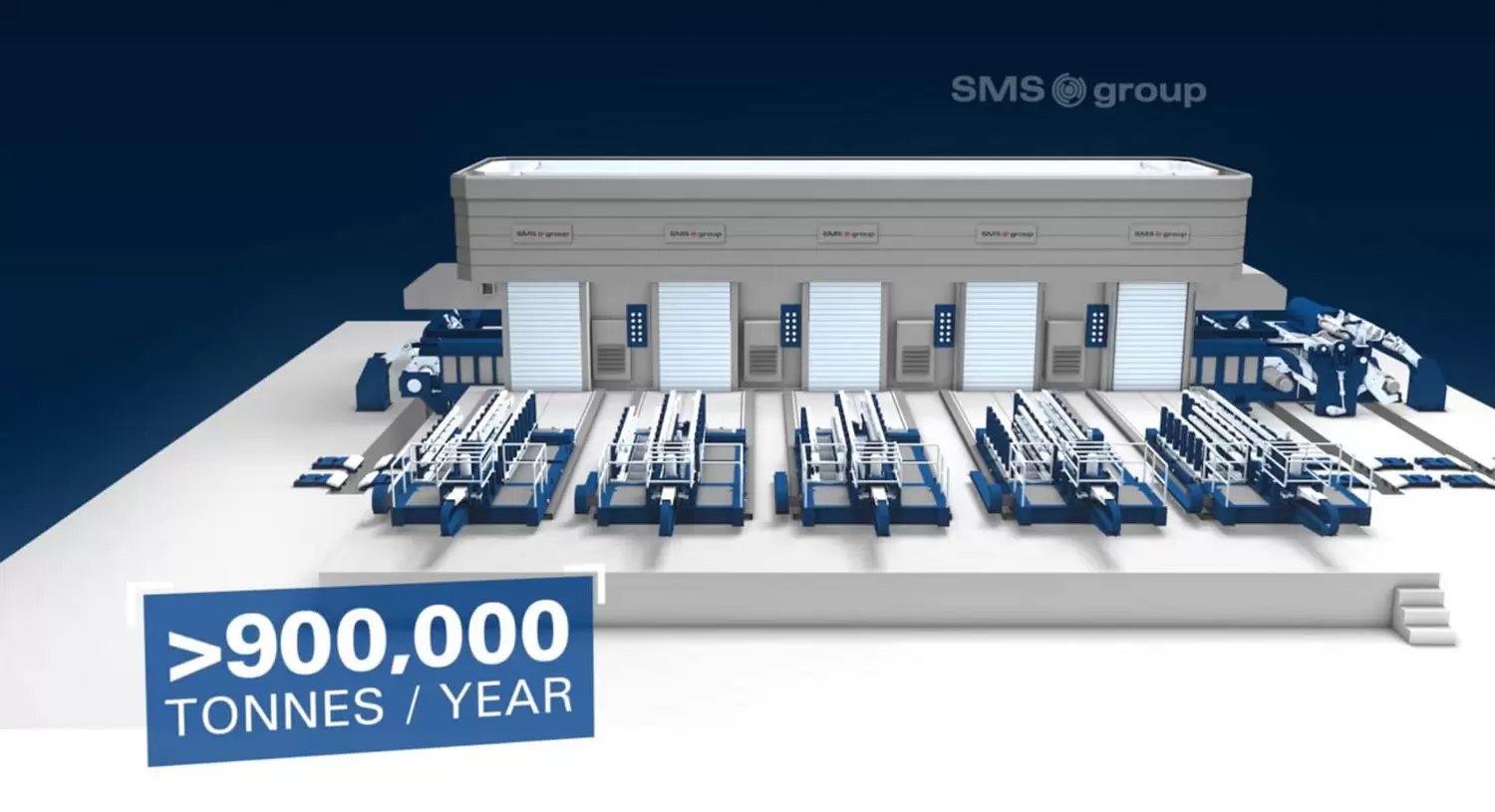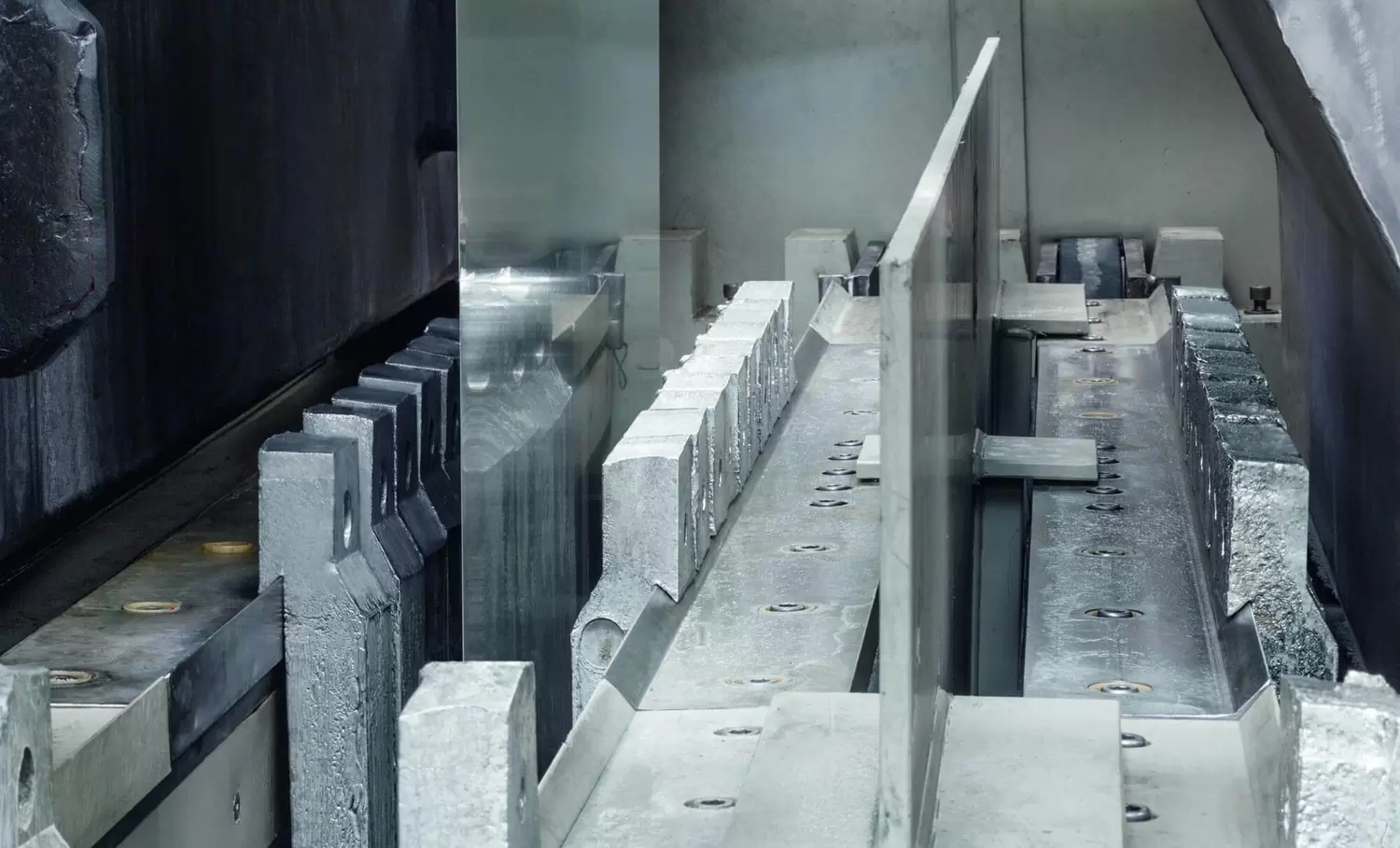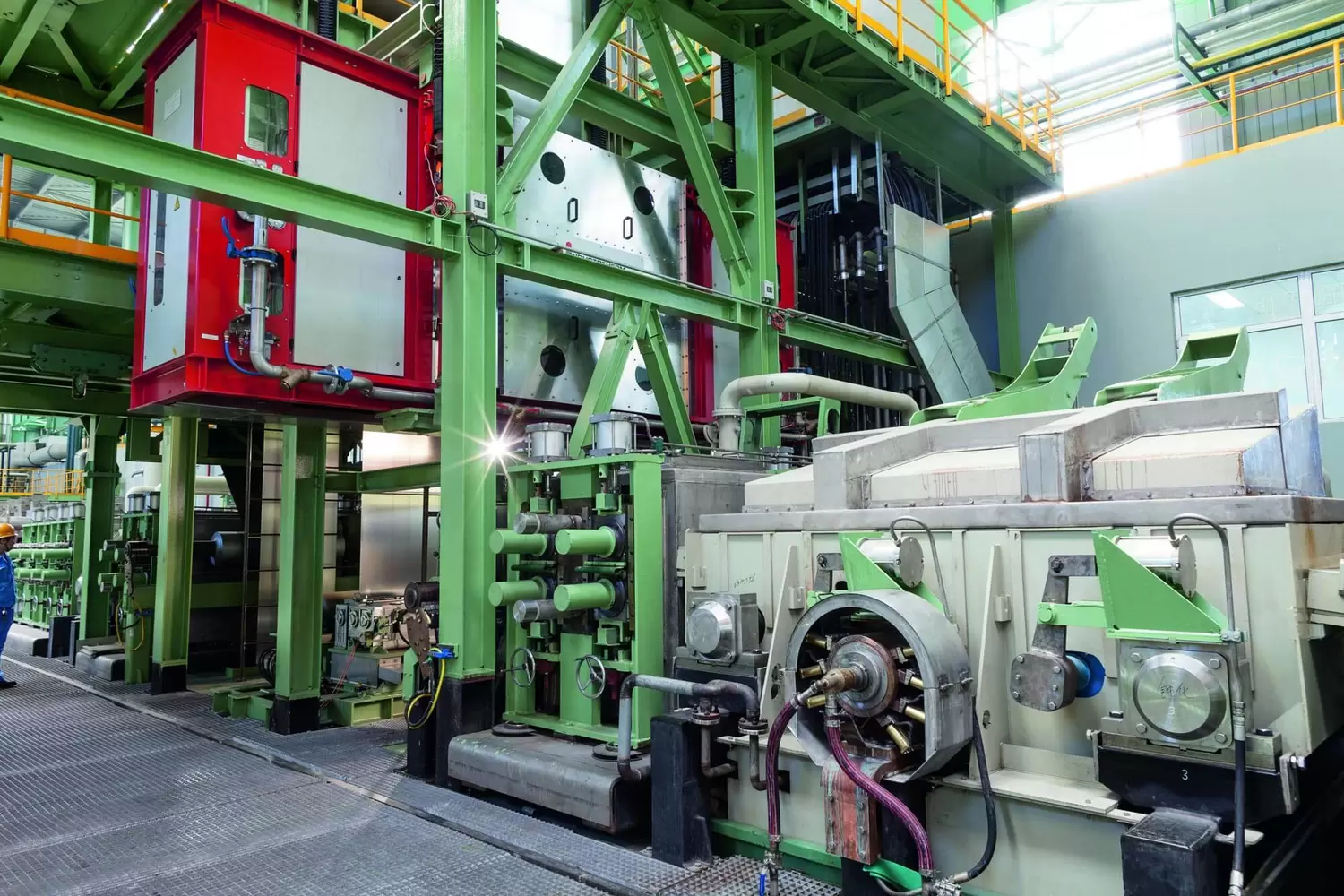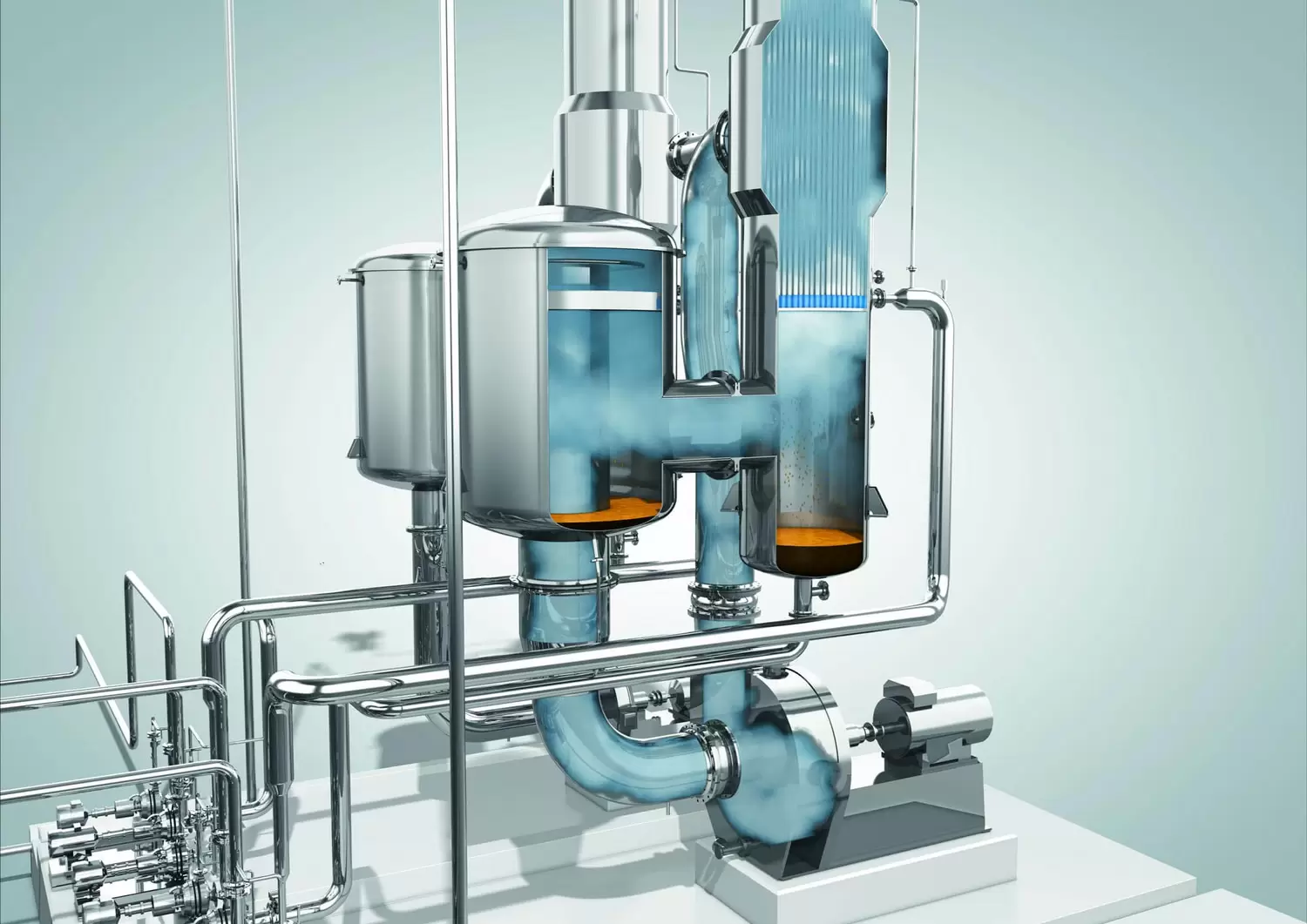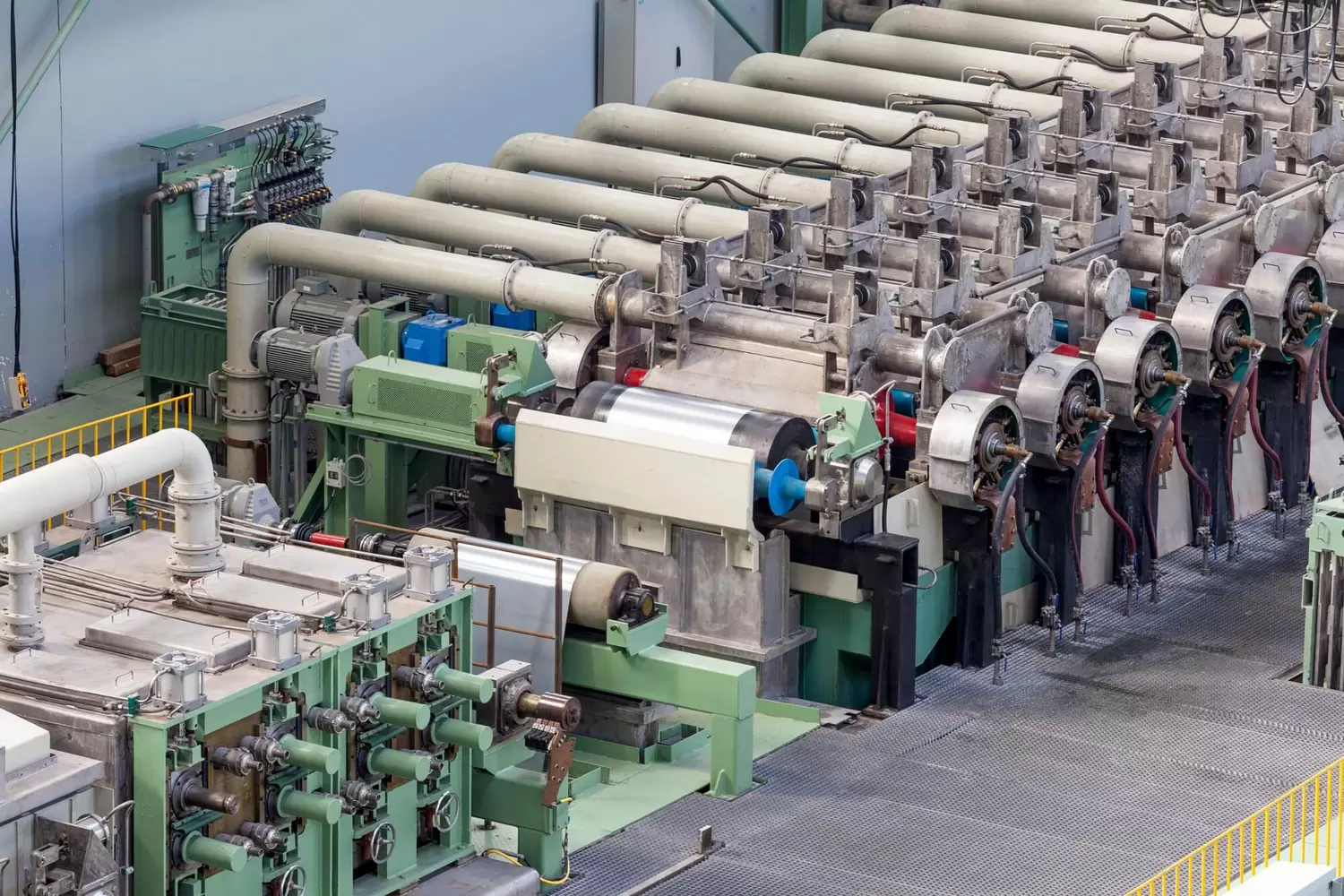The SMS group offers innovative, technical solutions at all steps of tinplate production for the efficient processing of hot rolled strip into packing material. All the necessary rolling and treatment facilities are supplied from a single source, including mechanical and processing equipment, furnace technology, electrical and automation systems and production know-how.
After rolling, there are two different process routes for the production of tinplate. In the conventional route the cold rolled strips are cleaned in an electrolytic cleaning unit, moved to a batch annealing furnace for recrystallization annealing and then surface-treated and reduced in an offline skin pass mill stand. In the other route – which is often used for higher capacities – all the process steps take place in a continuous tinplate annealing line with an inline skin-pass mill stand. Finally the material is coated with tin on an electrolytic tinning line.
-
Reversing cold mill
The allrounder
The reversing cold rolling mill is the all-rounder among the cold rolling mills: Here, thin strips, thick strips, soft grades, high-strength and ultra-high-strength strips can be rolled in succession on one and the same plant. If you want to produce small to medium batch sizes of certain products, this line is a highly efficient option. Depending on your product mix and the installed rolling technology, the capacity ranges from about 100,000 to 500,000 t/ year.
![]()
Reversing cold mill for tinplate -
Tandem cold mill
Higher production volumes
The batch Tandem Cold Mill is for higher production volumes and offers considerable advantages and makes production planning flexible. To increase the yield, we have developed a number of trend-setting technical features in recent years. Included here is our threading assistance system TRC®. Using our engineering expertise, we offer you customized, efficient greenfield or revamp designs to ensure you get the most out of your mill. Needless to say, we can easily retrofit all our newly developed features.
![]()
Layout Tandem cold mill -
Double cold reduction mill
Second rolling stage for tinplate
Main dataA special feature of tinplate production is the second rolling step for thickness reduction after annealing. Running parallel to this is a temper rolling process that prepares the strip for further surface finishing and coating. Our twin-stand double cold reduction mills (DCR) combine reduction rolling and skin-passing in a single mill. First up is thickness reduction in one stand, followed by skin-passing in the second stand. This ensures precise material properties and surface roughness of the tinplate and guarantees smooth further processing. You can rely on the best results from our DCR mills in CVC® plus design. They achieve excellent strip quality with proven technical solutions such as our new enhanced bending system for an extremely large roll gap range, multizone cooling, and Dry Strip system (DS system). A further advantage is that these mills can be operated in dry and wet tempering modes. Depending on the required capacity and product mix, we offer you DCR mills for batch as well as continuous inline operation in tinplate production lines.
![]()
Double cold reduction mill -
Tinplate continuous annealing line
Main dataThe annealing of the cleaned strip followed by reduction and surface treatment provides the material in the annealing line with the material and surface properties necessary for tinning and subsequent processing. The very thin material (up to 0.1mm) is processed on the lines at very high speeds (up to 750 m/min). The product range comprises all grades and also contains the qualities T2.5, T5 and DR 10, which cannot be produced by batch annealing. The strip cleaning section has efficient process components including spray and electrolytic cleaning cells. The radiant tube furnace is the heart of the plant and is recognized for its low resource consumption. Due to precise furnace control, the process follows the specified annealing curve exactly. Two 4-high skinpass mill stands are integrated for post-treatment. The first skinpass mill stand adjusts the mechanical-engineering characteristics of the strip by a thickness reduction. The second creates a defined strip surface structure.
![]()
Tinplate annealing line layout -
Electrolytic tinning line
The significant process steps in an electrolytic tinning line are cleaning, leveling, pickling, tinplating, remelting and passivating. All of these process steps must fulfill high requirements in order to guarantee the surface quality of the end material. SMS offers various innovative technologies for tinning lines, which increase the ecological and economic efficiency of the plant.
![]()
Layout of Eletrolytic tinning line
SMS group email service
Our promise to you: this is not another newsletter!
Use our contact form for questions, inquiries or personal contact.
-
Soluble anodes
The use of soluble anodes results in significant economic advantages compared to using insoluble anodes. Simply by reducing tin loss caused by sludge formation and paying lower prices for tin, it becomes possible to save up to 2.7 million euros per year. Moreover, there are no costs for dissolving the tin nor reconditioning the anodes. A further benefit are stable tinning conditions, given the parallel anode arrangement with the anode width being adapted to the strip width without the use of edge masking.
![]()
Tinning with soluble anodes -
Reflow technology
The induction unit, which can be adjusted vertical to the direction of strip travel, is very important for the surface quality. Due to a 100% induction the heat transport takes place contact-free, consistently and without the formation of “wood grains”. Because the nduction unit can be moved vertically, the heat-treating time can be correctly adjusted for all process conditions.
![]()
Reflow technology -
Evaporator
The contaminated rinsing water generated by tinplating and passivation is split up into a concentrate (electrolyte) and a distillate (rinsing water) in an advanced evaporator system and is reused in the process. Operating expenses are significantly reduced by this closed-circuit material flow. Moreover, the evaporators are heated by vapor compression from the process vapor itself.
![]()
Evaporator -
Preconditioning cell
The preconditioning cell is a special process component through which the strip travels right before entering the first tinning cell. Here, the strip is pre-activated and the last iron hydroxide particles are removed. This ensures that the iron content in the electrolyte remains at a stable low level.
![]()
Preconditioning cell
Services for this plant
Sorry, there are no results for the search term.

